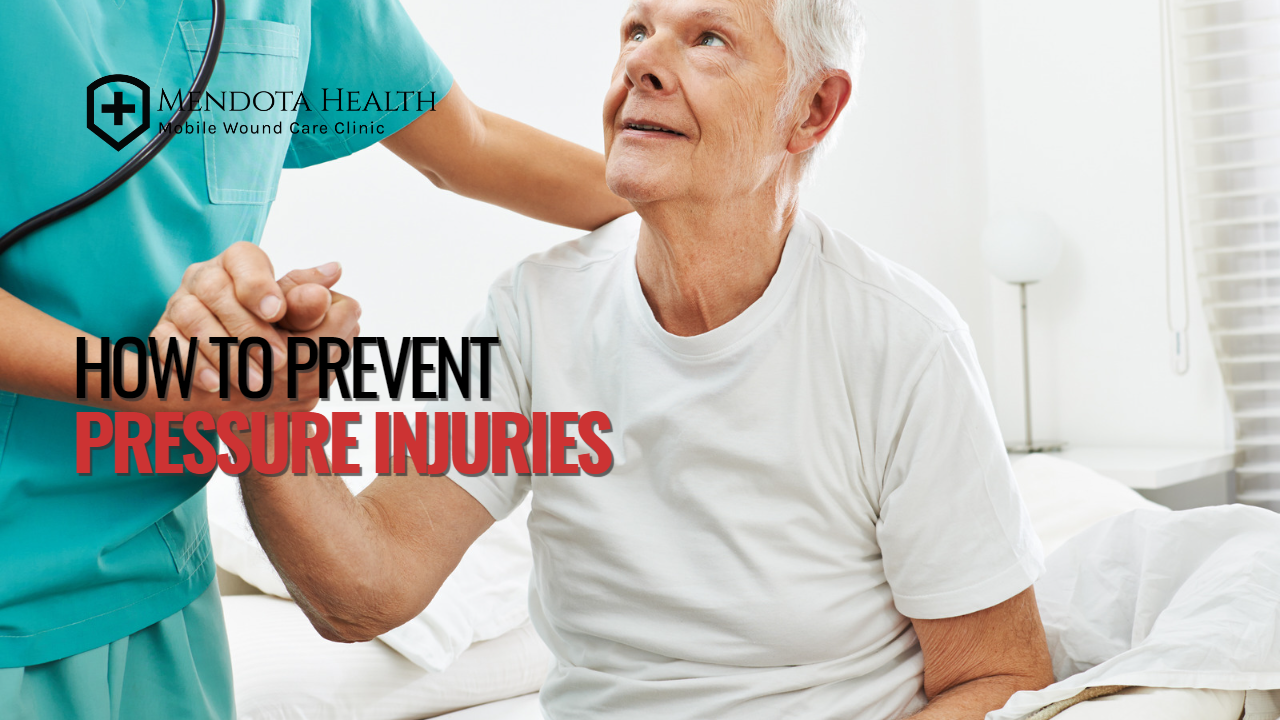
20 Mar How to Prevent Pressure Injuries
Pressure injuries, also known as pressure ulcers or bedsores, are injuries to the skin and underlying tissue caused by prolonged pressure on the skin. They can be a serious health concern for people who are immobile or have limited mobility, and can lead to pain, infection, and even death in severe cases.
What are pressure injuries?
Pressure injuries are caused by sustained pressure on the skin, usually in bony areas such as the hips, tailbone, and heels. When pressure is applied to the skin for an extended period of time, it can cut off blood flow to the affected area, leading to tissue damage and, eventually, an open wound. People who are immobile or have limited mobility are most at risk for pressure injuries, as they are unable to shift their weight and relieve pressure on their skin.
5 ways to prevent pressure injuries
- Repositioning: One of the most effective ways to prevent pressure injuries is to regularly reposition the person to relieve pressure on their skin. This can be done every 2-3 hours for people who are bedridden or every 1-2 hours for those who are in a wheelchair.
- Using special support surfaces: Special mattresses, cushions, and pads can help redistribute pressure on the skin and prevent pressure injuries from developing. These devices are designed to reduce pressure in bony areas and provide additional support in areas that are more vulnerable to injury.
- Keeping the skin clean and dry: Regularly cleaning and drying the skin can help prevent infections and skin breakdown. Moisturizing the skin can also help keep it healthy and prevent dryness and cracking.
- Maintaining proper nutrition and hydration: Good nutrition and hydration are essential for skin health and can help prevent pressure injuries from developing. Make sure the person is getting enough protein, vitamins, and fluids to support healthy skin.
- Monitoring the skin: Regularly checking the skin for signs of redness, irritation, or injury can help catch pressure injuries early and prevent them from getting worse. If you notice any changes in the skin, notify the healthcare provider immediately.
Read about wound undermining
how can nurses prevent pressure injuries?
Nurses play a critical role in preventing pressure injuries in their patients. Some ways that nurses can help include:
- Assessing the risk for pressure injuries: Nurses can use tools such as the Braden Scale to assess a person’s risk for pressure injuries and implement preventive measures accordingly.
- Developing an individualized care plan: Based on the person’s risk assessment, nurses can develop a care plan that includes specific measures for preventing pressure injuries, such as repositioning, using support surfaces, and monitoring the skin.
- Educating the person and their caregivers: Nurses can teach the person and their caregivers about the importance of preventing pressure injuries and how to perform preventive measures such as repositioning and skin care.
- Monitoring and documenting the person’s skin condition: Nurses should regularly check the person’s skin for signs of pressure injuries and document any changes in the skin’s condition.
What is the most important nursing intervention for prevention of pressure ulcers?
The most important nursing intervention for the prevention of pressure ulcers is repositioning. Repositioning involves moving the person’s body to relieve pressure on the skin and prevent pressure injuries from developing. This can be done by changing the person’s position in bed or in a chair, using pillows or other support devices, or having the person perform exercises to shift their weight.
What is the most important factor in preventing and treating pressure injuries?
The most important factor in preventing and treating pressure injuries is early detection and intervention. The earlier a pressure injury is identified and treated, the better the outcome for the person. This underscores the importance of regular skin assessments and ongoing monitoring of the person’s skin condition.
Which is the best method of skin care to prevent pressure ulcers?
The best method of skin care to prevent pressure ulcers is to keep the skin clean, dry, and well-moisturized. This can be done by using gentle, non-irritating cleansers and moisturizers, and avoiding harsh soaps and chemicals that can dry out the skin. Keeping the skin dry is also important, as moisture can increase the risk of skin breakdown and infection.
By following these best practices, healthcare providers can help prevent and manage pressure injuries and improve the overall health and well-being of their patients.

